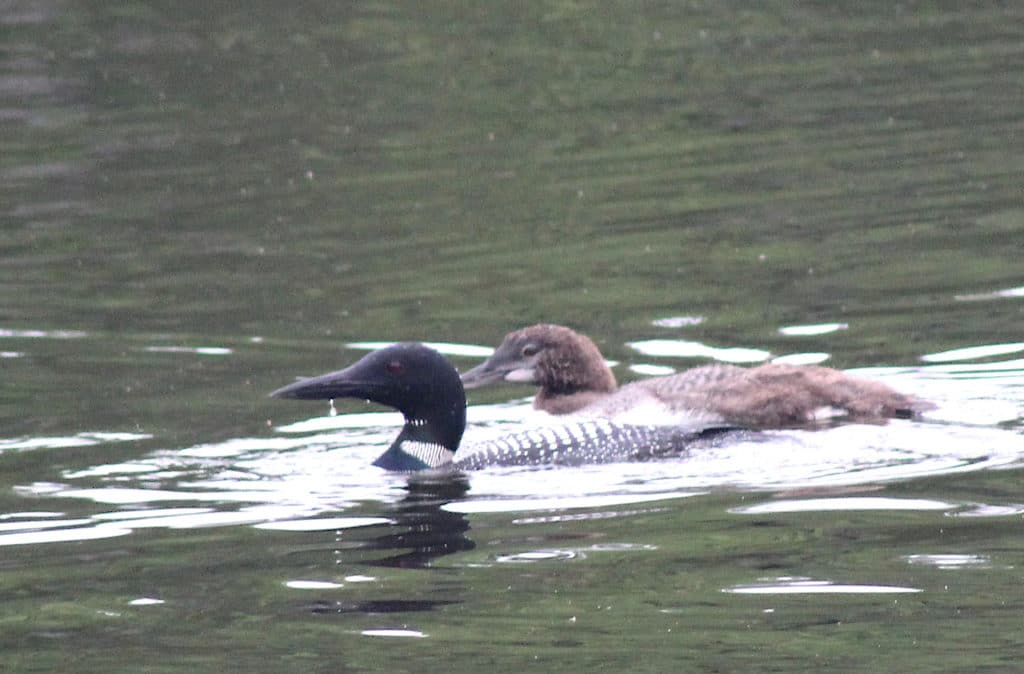
On May 8, advocates gathered to testify at a public hearing before Maine State Legislature’s Inland Fisheries and Wildlife Committee in support of LD 958, a bill to update existing law to phase out the sale and use of small-sized painted lead jigs to more comprehensively address lead-caused mortalities in Maine’s Common Loons.
Lead poisoning has long been one of the leading causes of death for adult loons in Maine. Loons ingest a striking amount of lost or discarded fishing tackle, or swallow fish that have ingested lead tackle, some of which contain hazardous and life threatening chemicals – especially those engineered with lead. Blindness, disorientation, paralysis, seizures, and “wing droop” are amongst some of the most common symptoms associated with lead poisoning. Click here to view Maine Audubon’s fact sheet on this bill.
Following a five-year phase-out process, it has been illegal to sell and/or use lead sinkers and bare “unpainted” jigs (weighing less than an ounce in weight or measuring less than 2.5 inches in length) in Maine since 2017. Maine Audubon believes that while this law and subsequent education and lead-buyback programs have proven effective in many ways, a loophole allows for the sale and use of painted lead jigs within these size and weight limitations, which both experts believe and research indicate are still impacting loons.
For the past 40 years, Maine Audubon has led a broad range of efforts focused on the health and well-being of Maine’s Common Loons. According to Maine Audubon, in the years since the current ban went fully into effect, from 2017-2022, lead poisoning was determined the ultimate cause of death in ~15% of known Common Loon mortalities in the state, and another 7% of loon carcasses recovered during these years were determined to have lead in their systems that contributed to their deaths.
At the public hearing on May 8, anglers, lead scientists, veterinarians, environmental organizations, and others emphasized that after ten years since the last bill to protect loons from lead was passed, the time is right to revisit this loophole to further protect the health and safety of this iconic species. Maine Audubon delivered testimony and a petition signed by more than 1,000 people in support of LD 958.
“Loons bring joy to so many Mainers,” says Tracy Hart, Conservation Biologist with Maine Audubon and coordinator of the Loon Restoration Project. “We can return the favor by taking steps to ensure loons continue to thrive—while still enjoying the activities and sports that lakes have to offer.”
“As a Maine fishing guide, commercial fly tyer, and aquatic toxicologist, I am very supportive of this important initiative to keep lead out of Maine’s waterways. This bill is an opportunity to ensure that anglers across the state are practicing conservation efforts that will play a role in protecting the Common Loon and many other wildlife species,” said Megan Hess, ecotoxicologist, Registered Maine Fishing Guide, and Founder of BeadHead Fishing Company.
“Ingested lead is a toxic sledgehammer for loons,” says Mark Pokras D.V.M., Associate Professor Emeritus at the Cummings School of Veterinary Medicine at Tufts University. “Nearly all loons that ingest lead die, and these deaths can be prolonged, painful, and cruel. We owe it to these beloved birds to reduce the amount of lead in the water.”
Members of the Inland Fisheries and Wildlife Committee plan to vote on the bill during a Work Session scheduled on May 17 at 10 am. Their vote will help determine the fate of the legislation before the full Maine State Legislature.
